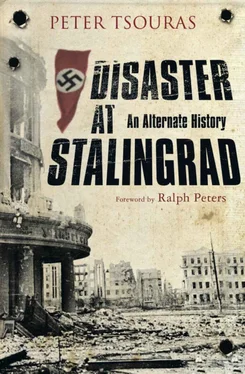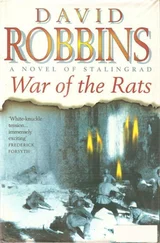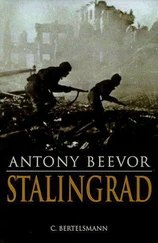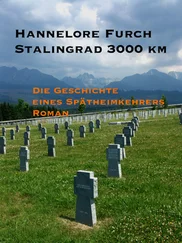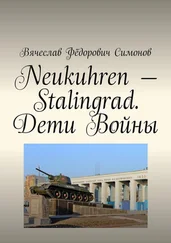9 *Dale M. Patterson, The Stalingrad Plot Against Stalin (Boulder, CO: Eastview Press, 1999), p. 146.
10 Chuikov, The Battle for Stalingrad, p. 185.
11 Beevor, Stalingrad, p. 206.
12 *Jason R. Smith, ‘A Masterpiece of Deception and Logistics: The Counter-Offensive Build-up for Operation Uranus’, Military Review, June 1976,
13 *Helmut Ratzinger, The Road to Astrakhan: A Soldier with 1st Panzer Army (New York: Kingston, 1988), pp. 188-9.
14 The rank of Oberjäger was a variation of the rank Oberschutze, equivalent to private first class and awarded to a soldier who had distinguished himself but was not thought suitable for the first NCO grade of Gefreiter (corporal). For Pohl the rank was recognition of his deadly efficiency as a sniper.
15 *Friedrich Pohl, A Sniper at Stalingrad (London: Greenhill, 1980), p. 23.
16 Mungo Melvin, Manstein: Hitler’s Greatest General (New York: Thomas Dunne, 2010), p. 289.
17 Manstein, Lost Victories, p. 287.
18 *Henning von Tresckow, Desperate Days (London: Greenhill, 1988), p. 211.
19 Melvin, Manstein, p. 289,
20 *Paul H. Vivian, ‘4th Panzer Army in the Battle of Stalingrad’, Military History Review, July 1992, p. 32. Both the XIV and XLVIII Panzer Corps had participated in the late October assaults in Stalingrad; at that time they had about 300 tanks. By the time each had been redeployed on the flanks, each had fewer than 100 tanks, putting them at the normal strength of a panzer division.
21 Zaitsev, Notes of a Russian Sniper, pp. 157-8.
22 Manstein, Lost Victories, p. 271.
23 Joachim Fest, Plotting Hitler’s Death, 289-90.
24 *Werner Maria Pohl, Ten Righteous Men of Germany (Berlin: Sandvoss, 1997), p. 310.
Chapter 13, Der Totenritt bei Leninsk
1 *Ivan I. Chonkin, The Life and Extraordinary Adventures of Georgi Zhukov (New York: Paladin, 1978), pp. 331-2.
2 *Walther von Seydlitz-Kurzbach, Command Decisions in the Stalingrad Campaign (Potsdam: Wehrmacht Press, 1955), p. 199.
3 Carell, Stalingrad, p. 158.
4 In Napoleon’s retreat from Moscow in 1812 his starving, freezing army attempted to cross the Beresina River over a few makeshift bridges. Discipline broke down as a mass of stragglers jammed onto the last bridge as the Russians poured artillery into them. The French lost as many as 20,000 men and a large number of camp followers. To this day Beresina is a French term for military disaster.
5 Jones, Stalingrad, p. 241.
6 Craig, Enemy at the Gates, pp. 194-5.
7 *Christopher Reese, The Cavalry to the Rescue: The LX Panzer Corps in the Battle for Stalingrad, Great Fighting Forces Series (London: Peregrine, 2002), p. 77.
8 Beevor, Stalingrad, p. 249.
9 *Georgi Zhukov, Operation Uranus and the Battle for Stalingrad (Moscow: Russian Armed Forces Press, 1966), p. 221. The RAFP had an active English-language publishing division that earned it considerable profits in the West by offering excellent translations of major works by senior officers. The works were highly respected since by that time there was no official editing of the author’s words.
10 Carell, Stalingrad, p. 161.
11 Erhard Raus, ed. Peter G. Tsouras, Panzers on the Eastern Front: General Erhard Raus and his Panzer Divisions in Russia 1941-1945 (London: Greenhill, 2002), p. 121.
12 Beevor, Stalingrad, p. 259.
13 *Ernst Thalmann, I served with von Seydlitz: The Account of a Signal Soldier in 6th Army Headquarters (London: Charing Cross, 1961), p. 177.
14 Carell, Stalingrad, pp. 604-5.
15 *Erich von Manstein, Decision on the Volga (New York; World, 1955), p. 322.
16 Carell, Hitler Moves East.
17 Rudel, Stuka Pilot, pp. 131-2.
Chapter 14, ‘Manstein is Coming!’
1 *Valentin V. Petrochenkov, The Tragic Hero: Chuikov at Stalingrad (London: Coopersmith, 1977), pp. 311-14.
2 Combat pilots of the Red Air Force were often referred to as Red Falcons.
3 *Albert Speer, Making War Feed War (Frankfurt: Sandvoss, 1966), pp. 339-42.
4 *Manstein., Decision on the Volga, p. 388. Since Hoth commanded only one panzer and one infantry corps in 4th Panzer Army, Seydlitz with the far larger force was put in command of both armies despite his being junior to Hoth.
5 *Nikita S. Khrushchev, The Crimes of Stalin: His Rise and Fall (Moscow: Progress, 1965), p. 304,
6 *Carl F. Goerdeler, To Remove a Tyrant (London: Greenhill, 1985), 316-18.
7 Raus, Panzers on the Eastern Front, p. 127.
8 Raus, Panzers on the Eastern Front, p. 128.
9 *Mason N. Dixon, The German LX Panzer Corps at Stalingrad, Elite Formations 98 (London: Peregrine, 2005), pp. 77-9.
10 *Nigel R. Nicholson, Stalin and Zhukov: A Study in Command Relationship (London: Collins, 1966), p. 332.
11 Tsouras, Book of Military Quotations, p. 314.
12 *Walther von Hünersdorff, Panzer Battle (Frankfurt: Altstein, 1965), p. 211.
13 Raus, Panzers on the Eastern Front, p. 128
14 Craig, Enemy at the Gates, p. 241.
15 Peter G. Tsouras, ed., Fighting in Hell: The German Ordeal on the Eastern Front, (London: Greenhill, 1995), pp. 78-82.
16 Alfred Novotny, The Good Soldier: From Austrian Social Democracy to Communist Captivity with a Soldier of Panzer-Grenadier Division ‘Grossdeutschland’ (Bedford, PA: Aberjona Press, 2003), pp. 44-7.
17 Erich von Manstein, Lost Victories (St Paul, MN: Zenith Press, 2004), pp. 361-2.
18 *Gerhard Engel, Scenes from the Werewolf (London: Greenhill, 1992), pp. 220-1.
19 Raus, Panzers on the Eastern Front, p. 168.
20 Craig, Enemy at the Gates, p. 241.
21 Raus, Panzers on the Eastern Front, p. 169.
22 *Eugene R. Wilson, Disaster at Kalach (New York: Hudson Publishers, 1977), pp. 321-2. The 66th Army had already been largely destroyed when the Germans had broken through the pocket and by 11th Army.
1 *Paul McClellan, Molotov: The Life of the Red Diplomat (Vancouver: King’s College British Columbia, 1988), p. 332.
2 *Sergei A. Alexandrov, They Met at Brest-Litovsk (Moscow: Voenizdat Press, 1968), pp. 92-6.
3 *Pohl, A Sniper at Stalingrad, p. 177.
4 *Vassili Zaitsev, The Last Bullet was for the Motherland (London: Greenhill, 1980), p. 238. This book and Pohl’s above were issued by Greenhill at the same time, a coup for the publisher who was actually able to host both Zaitsev and Pohl at the same London reception. It was harder to get Pohl to come out of his self-imposed anonymity in the mountains of Southern Argentina where he settled after the war to escape the vengeance of die-hard Nazis.
5 *Tom Rafferty, Double Shot: The Perfect Kill (New York: Soldier Press, 1988), p. 239.
6 *Zaitsev, Last Bullet, p. 240.
Bekker, Cajus, Hitler’s Naval War (New York: Zebra Books, 1977)
Beevor, Anthony, Stalingrad: The Fateful Siege 1942-1943 (New York: Penguin, 1999)
Boeselager, Phillip von, Valkyrie: The Plot to Kill Hitler (London: Phoenix, 2009)
Carell, Paul, Hitler Moves East 1941-1943 (New York: Bantam, 1967)
——, Stalingrad: The Defeat of the German 6th Army (Atlglen, PA: Schiffer, 1993)
Читать дальше
